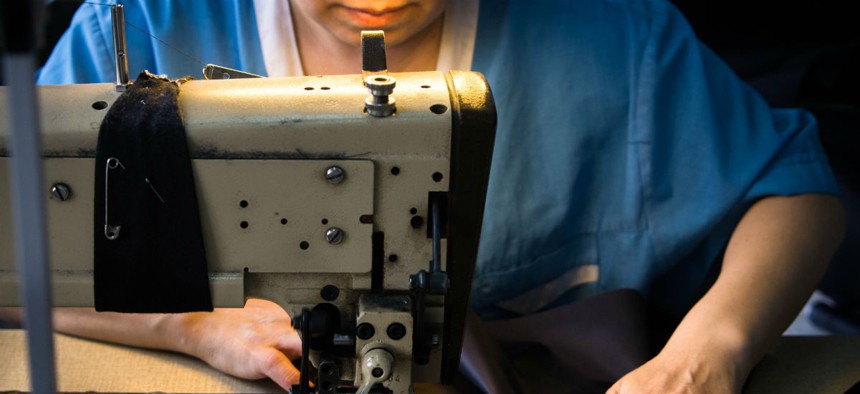How Government-Supported Forced Labor Is Undercutting American Manufacturers
Making federal prisoners sew garments is legal, but it doesn’t make it right.
At a White House event in July to promote U.S. manufacturing, President Trump said, “The Made in America movement is growing rapidly under my administration, and we're more determined than ever to protect our jobs, our industry, and our workers. Every day we are putting America first.”
It was a welcome statement but, unfortunately, it doesn’t hold true when it comes to military uniforms and other federal apparel. It’s an open secret that our government has an inside deal with the Federal Prison Industries, a component of the Federal Bureau of Prisons that goes by the trade name UNICOR, to “mandatory source” garments made by prison labor before opening the bidding to American manufacturers. Since prisoners make as little as 23 cents per hour, U.S. contractors can’t compete and many are being forced to close their doors.
Forcing prisoners to sew garments inside “factories with fences” is legal under the 13th Amendment of the U.S. Constitution, which abolished slavery and involuntary servitude except as punishment for a crime. However, incentivizing federal agencies to support these prison programs through federal procurement regulations is akin to promoting modern-day slavery. America holds only 5 percent of the world’s population, but maintains 25 percent of the world’s prison population. This scenario is inappropriate on many levels, yet Congress and administrations of both parties have taken steps that at best are hypocritical, and at worst, exacerbate the situation at the expense of American manufacturers.
In February 2016, President Obama signed the Trade Facilitation and Enforcement Act to give U.S. Customs and Border Protection the ability to prohibit, stop, and enforce a ban on imported products coming into the U.S. that have been “made with forced or prison labor.”
On July 17, 2017, when the U.S. Trade Representative published its NAFTA objectives, one target was to “require that NAFTA countries take initiatives to prohibit trade in goods produced by forced labor, regardless of whether the source country is a NAFTA country.” To be clear, they want to ensure that prison labor is exempt from benefits under NAFTA, but at the same time the government is continuing to grow the service right here at home.
Last November, the Justice Department issued the Federal Prison Industries 2016 Annual Report, which showed that clothing and textiles now account for 74 percent of the profits within these “factories-with-fences.” In its year-end message, the report notes: “Thanks to the efforts of all our employees and inmate workers, we are reversing years of declining sales and earnings, and taking steps to grow inmate employment levels.” That means fewer jobs for those on the outside.
It is disingenuous for our government to take the high moral ground by prohibiting the use of forced or slave labor around the world, while at the same time accelerating it inside the federal prison system. With a quarter of the world’s prison population behind our fences, one could easily conclude that we have re-invented the use of slavery to suit modern times and no one is calling this out.
The Defense Department leads government agencies that buy these prison products—it buys 50 percent of the output. Other key customers include the Agriculture, Homeland Security, Justice, Transportation, Treasury, Veterans Affairs departments, federal prisons, the General Services Administration, Social Security Administration, and the U.S. Postal Service.
If the federal government didn't farm these orders out to the prisons, these products would be made by U.S. apparel manufacturers (by law they must be constructed in the United States). There is something wrong when a U.S. soldier, security guard, or postal worker wears a garment sewn by a prisoner, simply because the prisoner was coerced by the federal government to sew it.
There is something wrong when our federal government knowingly promotes the growth of this sad enterprise in America.
Rick Helfenbein is President and CEO of the American Apparel & Footwear Association. Follow him on Twitter @rhelfen







